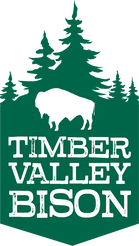Bison, An Amazing ComebackHello fellow bison enthusiasts!!
Recently, I wrote an article for a local paper, the Reminder, in Hastings. I'm not sure if it's been published yet, but thought I'd share it here so you can become a local historian and champion of bison!! "Believe it or not, there are at least 15 to 20 bison ranches in Michigan, with herds ranging in size from five to 300. Some of us see bison in movies or if we take a trip out west to a national park or the zoo; however, when my husband and I started a bison ranch north of Battle Creek on M-66 last year, we heard from a lot of people that when driving by they did a double-take because they thought they saw a bison while driving to work! They did. Since starting the ranch, I’ve also heard from some of our neighbors in the area with kids. When driving by they count the bison and do “buff checks.” It’s great to build community around our national mammal and help people learn more about them. Truly, it’s a blessing to have them here because at one point in history they were almost extinct. Bison are native to the Great Plains of the Midwest and used to number in the millions, grazing across states. (That would be an amazing sight!) The Indians, who lived among them, respected the bison and only hunted what they needed. Then, in the 1800’s, with westward expansion and the railroad, thousands were killed a year for decades. 1870 saw two million killed. By 1890, there were only 325 bison left on the Great Plains and 25 (1). This great animal would not make it to the 20th century without conservation efforts. In the early 1900’s, ranchers began to raise bison and those private herds accounted for most of the population growth and reintroduction. Also, Yellowstone began conservation efforts and built a herd of around 1,300 by 1954. Fast-forward to 2022 and the national bison population is around 500,000 (2). This is in part due to organizations like the National Bison Association, who have a goal of 1 million bison (3). One of their slogans is to “Eat Bison to Save Bison.” Only by becoming popular again will the bison population and industry thrive. According to the NBA, bison are also Regenerative by Nature©. Out on the Great Plains, the bison were a keystone of the environment and ecosystem. Their hooves acted then and now like a first-rate garden tool in that they break up the soil as they graze, pushing in seeds, manure, and old plant material. Thus, they eat, walk, till and fertilize, which is great for grasslands, prairies and local pastures. Bison are part of our heritage, our ecosystems and hopefully our future!" 1. Bureau of Sport Fisheries and Wildlife (January 1965). "The American Buffalo". 2. https://www.nps.gov/yell/learn/management/bison-history.htm 3. bisoncentral.com Hope you enjoyed the read and find it encouraging in uncertain times. Ashley |
AuthorWife, mom and community member learning to manage a ranch... Archives
July 2023
Categories |
|
For updates on availability and
to see more photos of our ranch, follow us on social media! |

Timber Valley Bison, LLC
22959 Capital Avenue NE, Battle Creek, MI 49017 info@timbervalleybison.com • 269-430-3250 facebook.com/timbervalleybison Contact Form |
Proudly powered by Weebly

 RSS Feed
RSS Feed